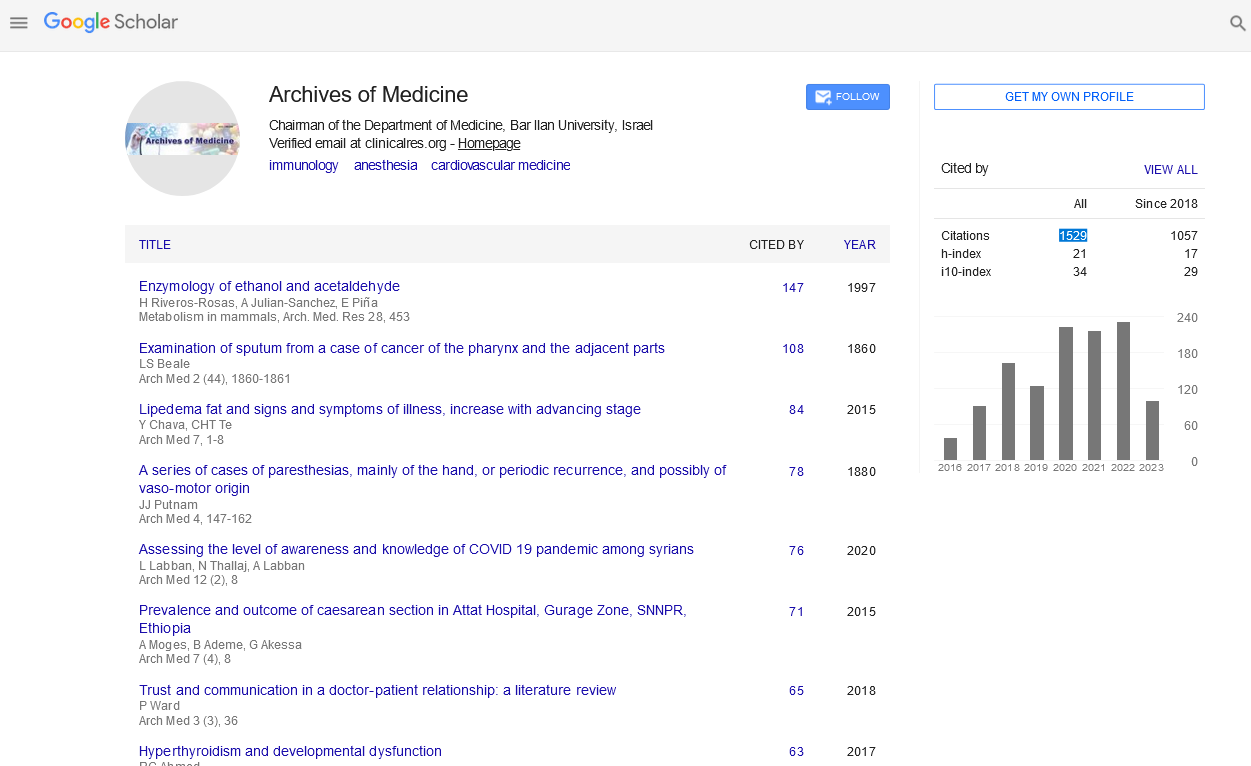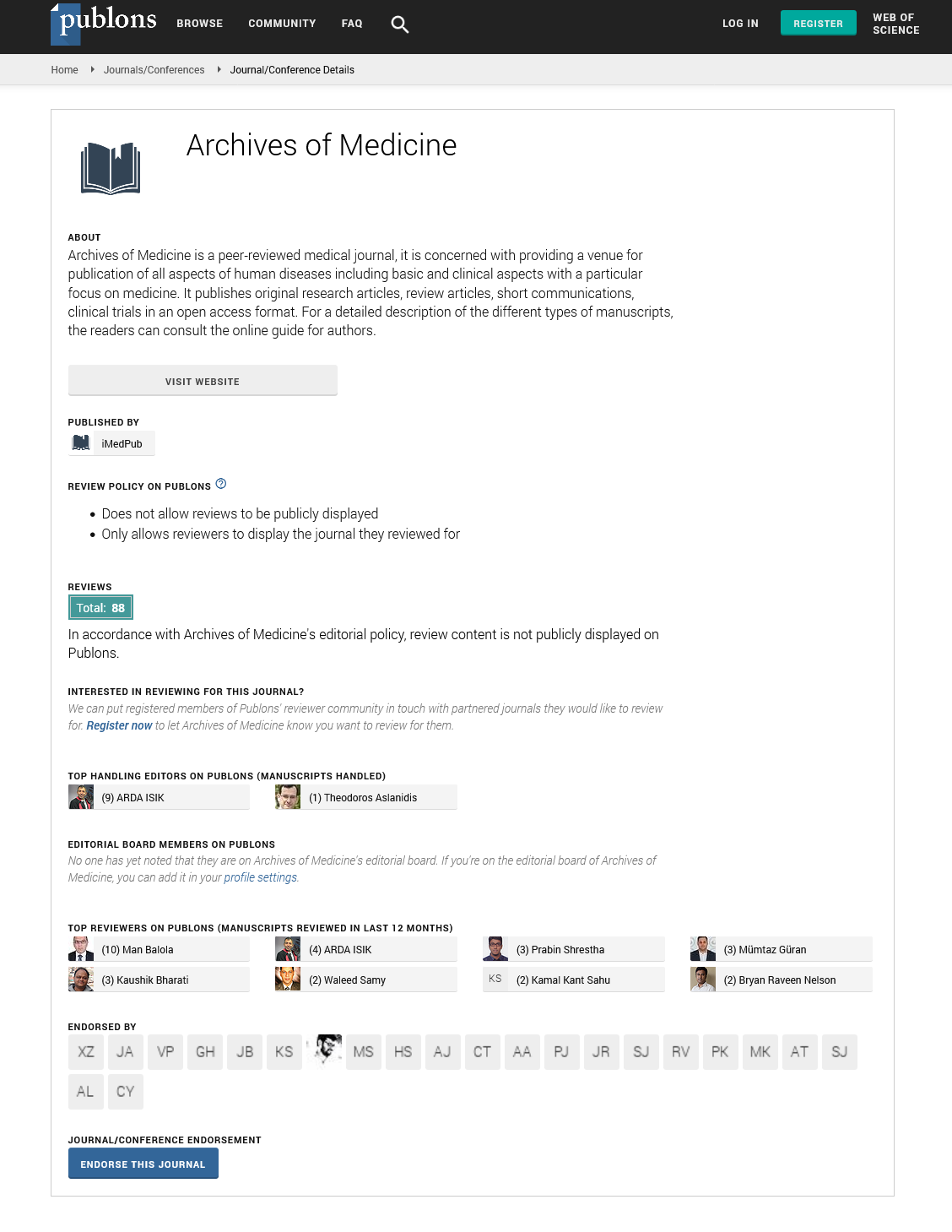Opinion - (2024) Volume 16, Issue 6
Climate change and infectious diseases: A looming threat to global health
John Stuart*
Department of Disease Control and Prevention, Columbia University, New York, NY, USA, USA
*Correspondence:
John Stuart, Department of Disease Control and Prevention, Columbia University, New York, NY, USA,
USA,
Email:
Received: 16-Oct-2024, Manuscript No. ipaom-25-15465;
Editor assigned: 18-Oct-2024, Pre QC No. P-15465;
Reviewed: 30-Oct-2024, QC No. Q-15465;
Revised: 04-Nov-2024, Manuscript No. R-15465;
Published:
11-Nov-2024
Introduction
Climate change has emerged as one of the most pressing
global challenges of the 21st century, with far-reaching
consequences across multiple sectors, from agriculture
to infrastructure to human health. While the impact of
climate change on the environment and biodiversity is welldocumented,
its effects on infectious diseases are becoming an
increasingly important area of concern. The delicate balance
between human populations and the ecosystems in which they
reside is being disrupted, resulting in new patterns of disease
transmission, altered disease dynamics, and the expansion of
infectious diseases to new geographic regions. These shifts
pose a significant and growing threat to global health, with
the potential for devastating consequences, particularly for
vulnerable populations in low- and middle-income countries.
This connection between climate change and infectious
diseases is multifaceted, involving a complex interplay of
factors, including changes in temperature, precipitation
patterns, and extreme weather events, all of which influence
the behavior of pathogens, vectors, and human populations.
Diseases that were once confined to specific regions are now
appearing in new locations, while traditional disease vectors
such as mosquitoes are migrating to higher altitudes and
latitudes due to changing environmental conditions. Moreover,
climate change can exacerbate the existing burden of infectious
diseases by stressing healthcare systems, increasing the
frequency of natural disasters, and amplifying socioeconomic
inequalities, all of which create a conducive environment for
the spread of infections [1].
The urgency of addressing this emerging threat to global
health cannot be overstated. In this context, understanding the
intricate link between climate change and infectious diseases
is crucial for developing effective mitigation and adaptation
strategies. This paper aims to explore the impact of climate
change on the transmission and spread of infectious diseases,
highlighting specific diseases that are influenced by changing
climatic conditions, and examining the implications for global
public health. It will also discuss potential solutions and
strategies that can help mitigate the impact of climate change
on infectious disease dynamics.
Description
Climate change affects infectious diseases in a variety of
ways, with each disease being influenced by a unique set of
climatic factors. One of the most well-known links between
climate change and infectious diseases is the impact on vectorborne
diseases, which are transmitted by organisms such as
mosquitoes, ticks, and fleas. Rising temperatures, altered rainfall
patterns, and shifting humidity levels all affect the distribution,
life cycle, and behavior of disease-carrying vectors. For
instance, warmer temperatures can lengthen the breeding season
for mosquitoes, allowing them to reproduce more frequently
and expanding their range into previously uninhabitable areas.
As a result, diseases like malaria, dengue fever, and Zika virus are becoming more widespread, particularly in regions that
were once considered low-risk. The World Health Organization
(WHO) has recognized climate change as a significant driver of
the spread of vector-borne diseases. In recent decades, we have
witnessed the resurgence of diseases such as malaria in areas
where it had been previously controlled, particularly in regions
with fluctuating weather patterns and growing urbanization [2].
In addition, climate change has played a role in the
emergence of new diseases, as changing environmental
conditions allow previously unknown pathogens to jump
from animals to humans, a phenomenon known as zoonotic
spillover. Diseases such as Ebola, SARS, and COVID-19 are
examples of zoonotic diseases that have been linked to changes
in ecosystems caused by deforestation, agricultural expansion,
and wildlife displacement due to climate-related factors.
Waterborne diseases are also significantly impacted by climate
change. Changes in precipitation patterns, including extreme
rainfall and prolonged droughts, can affect the availability and
quality of water sources. Flooding, for example, can overwhelm
sanitation systems, leading to the contamination of drinking
water with pathogens such as cholera and typhoid fever. On
the other hand, droughts and water scarcity can result in poor
hygiene conditions, increasing the risk of diarrheal diseases.
Climate change-induced disruptions to the hydrological cycle
can also exacerbate the spread of diseases like schistosomiasis
and leptospirosis, which are associated with stagnant or
contaminated water sources [3].
In addition to the direct effects of climate change on
the transmission of infectious diseases, there are indirect
consequences that further complicate the situation. Extreme
weather events such as hurricanes, floods, and wildfires can
lead to mass displacement, creating conditions conducive
to the rapid spread of infectious diseases. Refugee and
displaced populations are particularly vulnerable to outbreaks
of infectious diseases due to overcrowded living conditions,
limited access to healthcare, and inadequate sanitation.
The aftermath of natural disasters often results in weakened
healthcare infrastructure, making it more difficult to respond to
disease outbreaks and increasing the risk of preventable deaths.
The link between climate change and infectious diseases is also
evident in the impact on food security and nutrition. Climaterelated
changes in crop yields, combined with disruptions in
food distribution systems, can lead to malnutrition, which
weakens the immune system and increases susceptibility to
infectious diseases. Malnutrition is a major risk factor for
childhood diseases like pneumonia, diarrhea, and malarial
infections, and can exacerbate the burden of infectious
diseases on vulnerable populations, particularly in developing
countries. The economic implications of climate change and
infectious diseases are vast. The healthcare costs associated
with disease outbreaks are significant, placing a strain on
national healthcare systems and economies. Additionally,
climate-related disasters and the displacement of populations
can disrupt local economies, hinder access to healthcare, and
impede recovery efforts. Developing countries, in particular,
face the dual challenge of addressing the immediate health
impacts of climate change while simultaneously building
resilient healthcare systems to respond to the long-term health
threats posed by climate change [4,5].
Conclusion
The relationship between climate change and infectious
diseases is a growing concern for global health, and it is clear
that the effects of climate change on disease transmission
will continue to intensify in the coming decades. The shifting
geography of vector-borne diseases, the increased frequency of
waterborne disease outbreaks, and the rising risk of zoonotic
diseases all highlight the urgent need for proactive measures to
mitigate the health impacts of climate change. To address the
looming threat of infectious diseases in a changing climate, it
is essential to take a multi-faceted approach that involves both
mitigation and adaptation strategies. Mitigation efforts, such
as reducing greenhouse gas emissions, promoting sustainable
development, and conserving biodiversity, can help limit
the extent of climate change and its effects on infectious
diseases. Adaptation strategies, on the other hand, focus on
building resilience in health systems, improving surveillance
and early warning systems, and enhancing preparedness for
disease outbreaks. This includes strengthening healthcare
infrastructure, improving access to vaccines and treatments,
and ensuring that vulnerable populations are protected from
the health impacts of climate change.
Furthermore, collaboration among governments,
international organizations, healthcare providers, and
researchers is critical to addressing the complex and
interconnected challenges of climate change and infectious
diseases. Global partnerships and knowledge-sharing are
essential for developing and implementing effective strategies
to protect public health and mitigate the risks posed by climate
change. Ultimately, addressing the threat of climate change and
infectious diseases requires a holistic approach that recognizes
the interdependence of human health, environmental
sustainability, and social equity. By taking decisive action now,
we can reduce the burden of infectious diseases and build a
more resilient, healthier world for future generations. The
more resilient, healthier world for future generations. The
time to act is now, as the window of opportunity to prevent
and mitigate the health impacts of climate change is rapidly
closing.
Acknowledgment
None.
Conflict of Interest
None.
Reference
- Piscitelli P, Miani A. Climate change and infectious diseases: Navigating the intersection through innovation and interdisciplinary approaches. Int J Environ Res Public Health. 2024 8;21(3):314.
Google Scholar, Crossref, Indexed at
- Anwar A, Anwar S, Muhammad AY, et al. Climate change and infectious diseases: Evidence from highly vulnerable countries. Iran J Public Health. 2019;48(12):2187.
Google Scholar, Indexed at
- Liao H, Lyon CJ, Ying B, et al. Climate change, its impact on emerging infectious diseases and new technologies to combat the challenge. Emerg Microbes Infect. 2024 16(just-accepted):2356143.
Google Scholar, Crossref, Indexed at
- Grobusch LC, Grobusch MP. A hot topic at the environment–health nexus: Investigating the impact of climate change on infectious diseases. International Journal of Infectious Diseases. 2022 1;116:7-9.
Google Scholar, Crossref, Indexed at
- Edelson PJ, Harold R, Ackelsberg J et al. Climate change and the epidemiology of infectious diseases in the United States. Clin Infect Dis. 2023 1;76(5):950-6.
Google Scholar, Crossref, Indexed at






